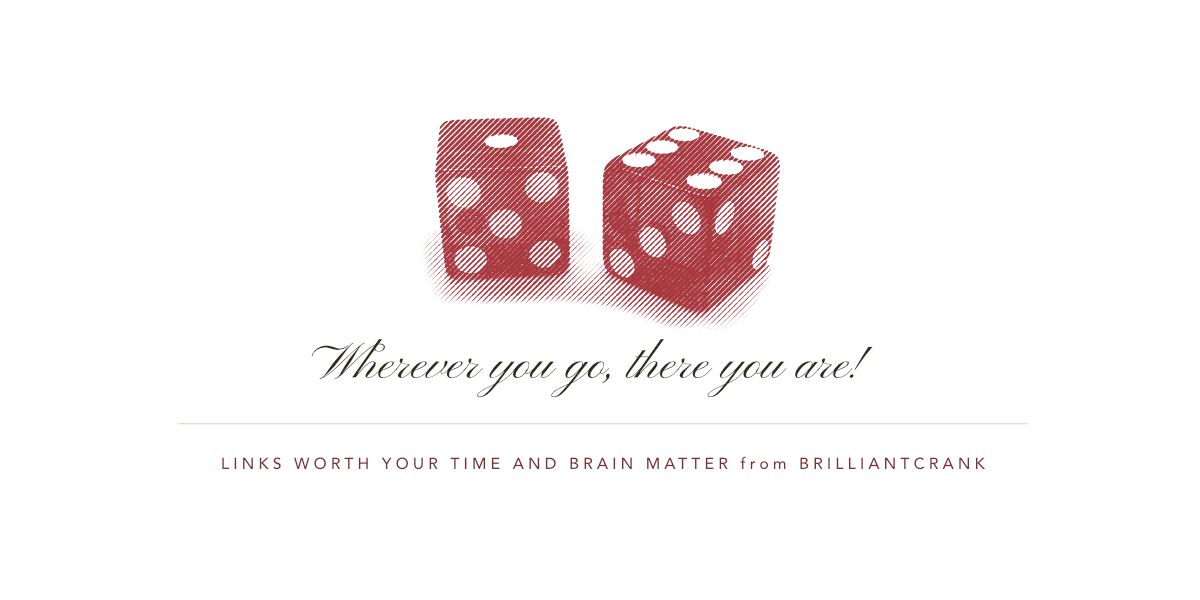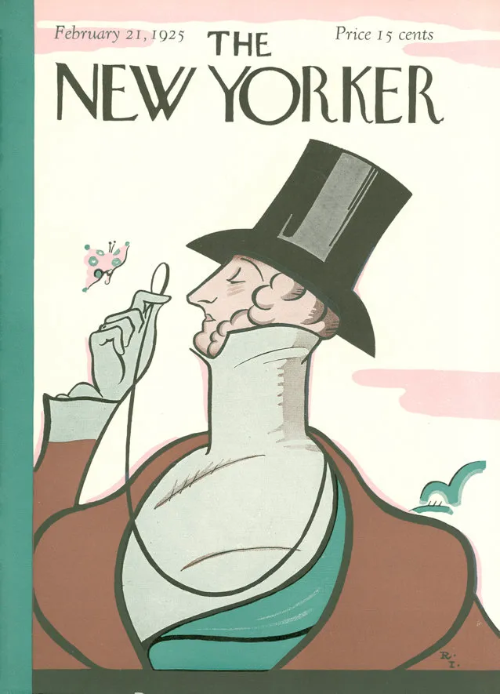The Dice — 036

This weekend I found the energy to see past the current events and look around me. My mantra right now is: Fight against being consumed. This morning She Who is Everything and the Provider of Breakfast and Love, shared insights from the Baking Powder Wars of the 19th century. Everything that is taking place today—weaponizing science and public policy to disinformation and media manipulation to monopolies all took place for market share gains for baking powder. It's absolutely true that history repeats itself, but I’m often surprised by the source.
Hang in there we have lots to see, read, and consider. Rolling…

It’s cliché for older people to kvetch and talk shit about younger generations but my god, I think Gen Z is going to save us from ourselves. Take, for instance, their “no buy 2025” trend which "encourages people to purchase as little new stuff as possible. Instead of needing to have the latest and greatest viral products, people are finding it’s better to focus on what they already own.” The articles shares several tactics for setting goals and making plans to put an end to our crazy buying habits.
My favorite: “Whenever [Marissa] sees something she likes, she takes a screenshot of the item, puts it in a folder on her computer, and—at the end of each month—deletes anything she hasn’t thought about. At the end of every quarter, she’ll allow herself to buy something from this folder with money she set aside in a savings account.” That's some real S-mart smart right there.
In addition to saving money, there are many health benefits from reducing our spending habits.


The New Yorker turns 100 this week, the magazine debuted on February 21, 1925. It was started by Harold Ross, an American from Aspen, Colorado who was sent to the south of France during World War I. However, his tenure did not last long as he “quickly deserted from his Army regiment and made his way to Paris, carrying his portable Corona typewriter.” After a stint with a startup publication called Stars and Stripes, he made his way to New York City and started the magazine. The first issue “featured a watercolor by Ross’s artist friend Rea Irvin of a dandified figure staring intently through a monocle at—of all things!—a butterfly. That image, nicknamed Eustace Tilly, became the magazine’s unofficial emblem.” Today the figure is synonymous with the brand. The special anniversary issue is sold out almost everywhere but there is plenty to browse and read online (side note: The New Yorker—among many magazines—is available to Apple News subscribers).
Somewhat related: The Zine Bakery is a database “collecting zines at the intersections of culture, tech, and justice.” The bakery is a unique project by Dr. Amanda Wyatt Visconti of the UVA Library Scholar’s Lab.

As you have likely seen and heard, another NYC media institution is celebrating fifty years this week. Last night SNL hosted their three-hour-long special with a cornucopia of past cast members, hosts, and musical guests. Eddie Murphy playing Tracy Morgan was spot on. In another segment Tom Hanks hosts a memorial to those “we’ve lost…SNL sketches and characters that have aged horribly.” So cringe.
Former cast member and all-time great Norm Macdonald was mentioned and remembered a few times. While I will always stop what I’m doing to watch him play Turd Ferguson on Celebrity Jeopardy, it’s his jokes on late night reign supreme. The Moth is hands down one of the best Norm jokes ever, but don’t miss The Porpoise and The Turtle.

"When everyone can create everything, what will remain valuable in design? New originality, high craft, and brand experience." David Hoang explores this question in his latest article, When everyone can build anything. I want to spend more time on this topic, but it’s intriguing to see where his thoughts on AI and design are headed: “In order for new originality to exist, the role of taste and curation are essential as new inputs for Generative AI. Taste may be a topic that feels fluffy to people, but it's a key input of what to make in the first place. Insights are another input that designers naturally bring into their research. When everything can be built, understanding what is important and why is at the front.”
I pair David’s thoughts with those of PJ Onori who wants to use AI as a tool for signal vs. noise reduction. From his post, AI doesn't have to be horrible: “I don’t think we need technology’s help in making more stuff. Stuff deficit isn’t our problem. The last decade of tech has been a continual slide towards more. More features, more meetings, more messages, more documents. More everything. In my experience, the majority of that stuff is unorganized and/or unnecessary. Generative AI is dousing our existing dumpster fire with napalm. Instead of using AI to make stuff, we should be using it to get rid of stuff. AI can help pull signal from all our noise.”
My last thought on this topic comes from a webinar with Ethan Mollick, author of the book Co-Intelligence: Living and Working with AI.
Much much-needed food for thought to chew on this week.

Last month Boom, a civil aviation company building supersonic aircraft achieved its goal of flying past Mach One without the glass-shattering sound typically attributed to reaching that speed. Rob Beschizza explains why in his post on Boing Boing. “The XB-1…achieves a ”bottomless cruise” by utilizing a phenomenon called "mach cut off," where the sound waves are refracted upwards, and the sonic boom never reaches the ground. The idea behind each cutoff has been around since the 1960s, but the phenomenon only occurs at the correct altitude and speed for atmospheric conditions, requiring computing power unavailable in the Concorde era.” The test aircraft is one-third the size of their first, beautiful aircraft as seen above called “Overture.”

For those looking for the perfect distraction might I suggest browsing the Type Foundry Directory of independent type studios and foundries. The directory charts a long list of font creators along with the availability of free trials, web and variable options, etc. The best way to look through this collection is through the “Tile View” option—see the link located in the lower left of the page. There are several studios that are staples in the industry but many were new to me. A few standout favorites include 29Letters, Typejockeys, Frost, and Type Salon. Now I just need a few new projects to work on so I have a reason to put more type to use.
For more type directory goodness: Type Foundry Index.
Published in Tacoma, Washington with A Slow Rush by Tame Impala spinning.

Member discussion